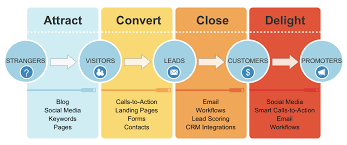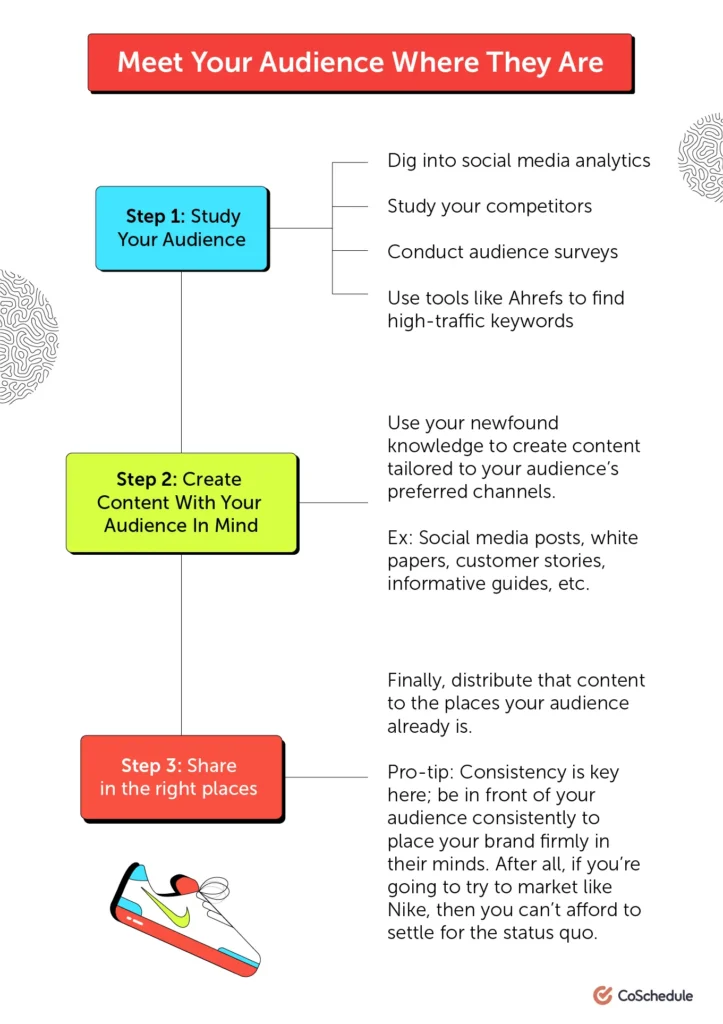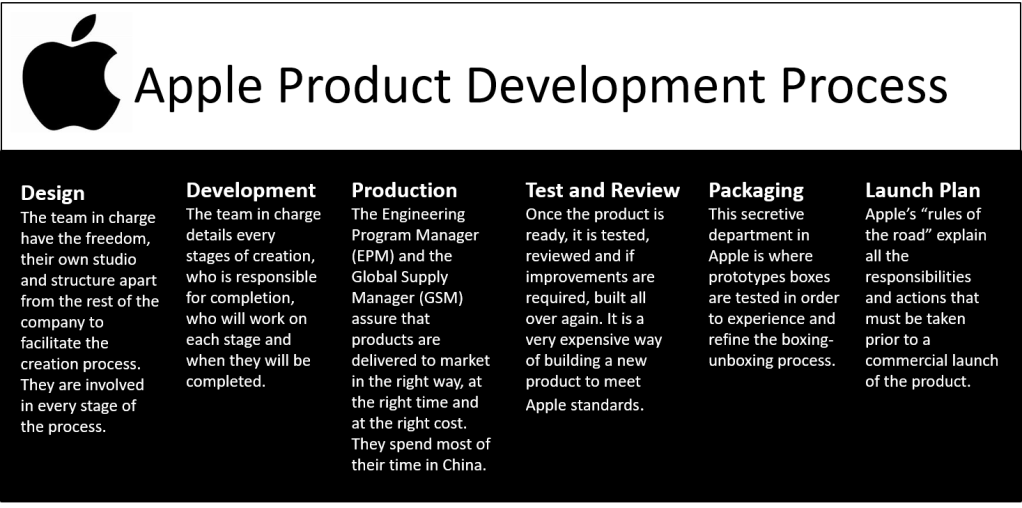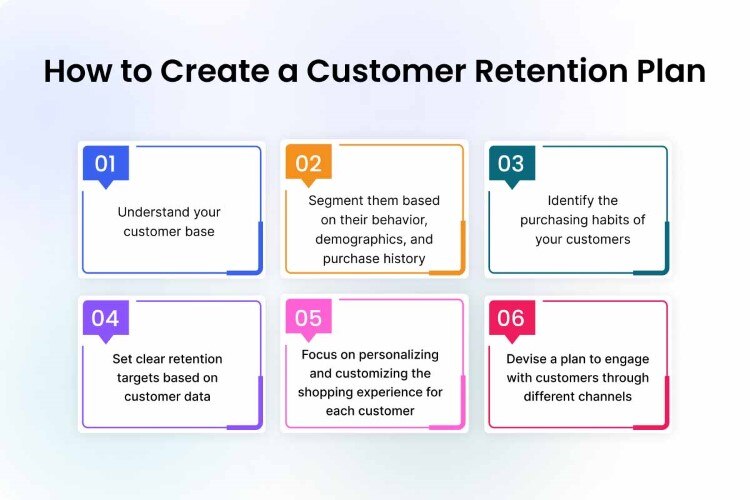Introduction to Process Marketing Campaigns
Process marketing campaigns represent a strategic approach to organizing and executing marketing efforts with a clear and systematic workflow. Unlike ad-hoc marketing initiatives, these campaigns focus on predefined steps that streamline tasks, improve collaboration, and ensure consistency across all channels. The goal is to create a repeatable and efficient framework that drives measurable results while reducing waste and inefficiency.
In today’s fast-paced business environment, marketing requires more than creativity—it demands structure and precision. Process marketing campaigns bridge the gap between creative ideation and execution by implementing step-by-step methodologies that align with organizational goals. They help marketers maintain focus, adapt to changes, and deliver targeted messaging that resonates with the audience.
At its core, a process marketing campaign involves:
- Planning: Defining the campaign’s objectives, target audience, and key performance indicators (KPIs).
- Execution: Coordinating resources and teams to deploy marketing assets like advertisements, social media posts, and email campaigns.
- Monitoring: Continuously tracking progress and performance using analytics tools to ensure the campaign stays on course.
- Optimization: Adjusting strategies based on real-time data to maximize impact and ROI.
This structured approach provides several advantages:
- Efficiency: Streamlined processes save time and reduce operational errors.
- Consistency: Ensures brand messaging remains uniform across all channels.
- Measurability: Facilitates accurate tracking of results and ROI.
- Scalability: Allows campaigns to grow without losing control or quality.
Process marketing campaigns are essential for businesses seeking to achieve sustainable growth. They empower teams to execute marketing strategies precisely, ensuring every effort contributes to the overarching business goals. As businesses embrace digital transformation, adopting structured marketing processes is no longer optional—it’s a necessity for success.

1. Content Marketing Process by HubSpot
HubSpot, a leader in inbound marketing, has perfected the content marketing process marketing campaign to help businesses attract, engage, and delight customers. Their systematic approach revolves around creating and distributing valuable, relevant, and consistent content to a clearly defined audience. Here’s an overview of HubSpot’s content marketing process:
1. Define Your Goals – HubSpot emphasizes the importance of aligning content marketing goals with overall business objectives. Whether it’s generating leads, driving website traffic, or enhancing brand awareness, clear goals provide a roadmap for creating purposeful content.
2. Understand Your Audience – HubSpot’s Buyer Persona tool helps businesses create detailed profiles of their ideal customers. Understanding audience needs, pain points, and preferences enables marketers to craft content that resonates and delivers value.
3. Conduct Keyword Research – Keyword research is a cornerstone of HubSpot’s content marketing process. By identifying high-traffic and relevant keywords, businesses can create content that ranks well in search engines and addresses user queries effectively.
4. Plan and Develop a Content Strategy – HubSpot advocates for a well-documented content strategy. This includes:
- Content Types: Blog posts, eBooks, videos, infographics, etc.
- Content Topics: Based on customer challenges and industry trends.
- Editorial Calendar: Scheduling content production and publishing for consistency.
5. Create High-Quality Content – HubSpot prioritizes creating content that is engaging, informative, and actionable. Their approach includes:
- Compelling headlines to draw attention.
- Storytelling to connect emotionally with the audience.
- Visual elements to enhance readability and engagement.
6. Distribute Content Across Channels – Content distribution is critical for reaching the target audience. HubSpot’s process marketing involves leveraging multiple channels, including:
- Social media platforms.
- Email marketing campaigns.
- Search engine optimization (SEO).
- Paid advertising campaigns.
7. Promote Content Effectively – HubSpot emphasizes the importance of content promotion. They encourage businesses to use influencer outreach, partnerships, and paid promotions to amplify reach and visibility.
8. Analyze and Optimize Performance – Using HubSpot’s analytics tools, marketers track content performance metrics such as:
- Traffic and engagement rates.
- Lead conversions.
- ROI on content efforts.
Based on insights, businesses can refine their strategy, improve underperforming content, and double down on successful initiatives.
9. Repurpose and Recycle Content – To maximize ROI, HubSpot recommends repurposing content for different formats and platforms. For example, a blog post can be turned into a video, infographic, or podcast episode to reach a broader audience.
Why HubSpot’s Content Marketing Process Works
HubSpot’s process marketing campaign is customer-centric, data-driven, and highly adaptable. It enables businesses to establish thought leadership, build trust with their audience, and drive long-term success. By following HubSpot’s methodology, marketers can ensure their content not only attracts leads but also nurtures them through the buyer’s journey, converting them into loyal customers.

2. Social Media Marketing Process by Nike
Nike’s social media marketing process marketing campaign exemplifies excellence in leveraging digital platforms to connect with audiences, build brand loyalty, and drive engagement. Known for its compelling storytelling, innovative campaigns, and focus on community building, Nike’s approach revolves around a structured yet flexible process tailored to its brand values and audience expectations.
1. Understand the Audience – Nike prioritizes knowing its audience deeply, including their demographics, interests, values, and behaviors. By focusing on athletes, fitness enthusiasts, and those inspired by an active lifestyle, Nike crafts messages that resonate emotionally and personally.
- Key Insight: Nike doesn’t only target professional athletes but also everyday people striving to achieve their personal goals, creating a broad appeal.
2. Establish Goals and KPIs – Nike sets clear objectives for its social media campaigns, such as:
- Enhancing brand awareness.
- Driving engagement through likes, shares, and comments.
- Boosting sales and traffic to its e-commerce platforms.
- Promoting inclusivity, sustainability, and innovation in sportswear.
Key performance indicators (KPIs) help Nike measure success effectively.
3. Create Compelling Content – Nike’s content strategy focuses on storytelling that inspires. Their social media posts often include:
- Powerful visuals: High-quality images and videos showcasing athletes and products.
- Emotive storytelling: Campaigns like “Just Do It” and “You Can’t Stop Us” evoke motivation and resilience.
- User-generated content (UGC): Nike encourages fans to share their stories and experiences, creating authentic engagement.
Nike also tailors content for each platform (Instagram, TikTok, Twitter, YouTube, etc.), leveraging unique formats like Instagram Stories, TikTok trends, and YouTube documentaries.
4. Build Community and Foster Engagement – Nike’s strategy extends beyond promotion to fostering a sense of community. They engage with followers by:
- Responding to comments and direct messages.
- Running challenges and campaigns, such as the #MoveWithNike initiative.
- Showcasing UGC, making followers feel valued and part of the brand story.
Their campaigns often focus on social issues like equality and sustainability, creating deeper emotional connections.
5. Leverage Influencers and Brand Ambassadors – Nike collaborates with global sports icons (e.g., Michael Jordan, Serena Williams, LeBron James) and social media influencers to amplify its reach. These partnerships ensure authenticity and create aspirational associations with the brand.
6. Use Data and Analytics – Nike’s social media marketing process marketing is data-driven. They analyze metrics such as:
- Engagement rates (likes, comments, shares).
- Audience growth (follower count).
- Website traffic and sales conversions driven by social media campaigns.
This data helps refine strategies, identify trends, and adapt campaigns to maximize effectiveness.
7. Innovate and Adapt to Trends – Nike is quick to embrace new trends and platforms. For instance, they’ve effectively used TikTok to reach younger audiences through viral challenges and creative videos. By staying ahead of digital trends, Nike remains relevant and appealing to its diverse audience.
8. Seamless Integration with E-commerce – Nike integrates its social media campaigns with its e-commerce platforms, allowing users to easily shop for featured products through direct links on Instagram, Facebook, and other platforms. This smooth customer journey enhances conversion rates.
9. Promote Social Responsibility – Nike’s social media campaigns frequently highlight its commitment to social causes, such as sustainability, diversity, and empowerment. Campaigns like “Equality” and “Move to Zero” emphasize values that resonate with the audience, reinforcing brand loyalty.
Why Nike’s Social Media Marketing Process Stands Out
Nike’s process marketing campaign is successful because it combines strategic planning, emotional storytelling, and cutting-edge digital techniques. By fostering a sense of community, aligning with cultural moments, and leveraging technology, Nike has become a benchmark for brands seeking to maximize their social media impact. Their campaigns inspire action, not just purchases, making Nike a leader in social media marketing.

3. Product Launch Process by Apple
Apple’s product launch process marketing campaign is renowned for its meticulous planning, innovative design, and impactful marketing, contributing significantly to the company’s success. This process marketing campaign, known as the Apple New Product Process (ANPP), encompasses several key stages:
- Conceptualization and Design: Apple’s design team begins by exploring multiple concepts, often developing numerous prototypes before selecting the most promising one. This iterative approach ensures that only the most refined and innovative designs progress to the development phase.
- Development and Prototyping: Once a design is selected, it undergoes rigorous development and prototyping. The ANPP document details each stage of this process marketing, defining responsibilities, timelines, and workflows to ensure clarity and efficiency.
- Executive Review: Apple’s executive team holds regular reviews, often weekly, to assess the progress of all products in development. This hands-on involvement ensures alignment with the company’s strategic vision and allows for timely decision-making.
- Secrecy and Security: Maintaining confidentiality is paramount in Apple’s product development. Strict security measures, including restricted access and specialized protocols, are enforced to prevent leaks and protect intellectual property.
- Pre-Launch Planning: As the product nears completion, a comprehensive launch plan, often referred to as the “Rules of the Road,” is developed. This plan outlines all necessary steps leading up to the product launch, assigning responsibilities to ensure a coordinated effort.
- Marketing and Promotion: Apple’s process marketing focuses on creating anticipation and excitement. This includes high-profile events, compelling advertisements, and strategic media placements to build buzz around the upcoming product.
- Product Launch: The culmination of the process marketing is the product launch event, where Apple unveils the new product to the public. These events are meticulously orchestrated to highlight the product’s features and Apple’s commitment to innovation.
Apple’s disciplined approach to product launches, characterized by thorough planning, design excellence, and strategic marketing, has set a benchmark in the industry, contributing to the company’s enduring success.

4. Email Marketing Process by Airbnb
Airbnb’s email process marketing is a prime example of how to create personalized, engaging, and results-driven campaigns that resonate with a global audience. By leveraging data insights, targeted messaging, and a clear value proposition, Airbnb has turned email marketing into a key driver of its success.
1. Define Objectives – Airbnb’s email marketing campaigns are tailored to achieve specific goals, such as:
- Driving bookings for hosts.
- Inspiring travel through curated recommendations.
- Promoting new features or services.
- Encouraging inactive users to re-engage with the platform.
Each campaign aligns with Airbnb’s broader mission of fostering connection and belonging.
2. Audience Segmentation – A cornerstone of Airbnb’s process marketing is segmentation. They divide their audience into distinct groups based on factors like:
- Location preferences.
- Past bookings and travel history.
- User behavior (e.g., active vs. inactive users).
- Demographics and interests.
This segmentation ensures that emails are highly relevant to each recipient.
3. Personalization and Content Creation – Airbnb leverages user data to personalize email content, making it more engaging and actionable. Examples include:
- Travel suggestions based on previous destinations or browsing behavior.
- Dynamic content featuring accommodations similar to the user’s preferences.
- Localized offers for nearby getaways or trending destinations.
Airbnb’s emails also feature visually appealing designs, with high-quality images and concise copy that evoke wanderlust and curiosity.
4. Crafting Compelling Subject Lines – Subject lines are designed to grab attention and entice users to open the email. Airbnb often uses friendly, conversational tones and highlights unique selling points, such as:
- “Ready for your next adventure?”
- “Last-minute getaways you’ll love.”
- “Experience the best stays near you.”
5. A/B Testing and Optimization – Airbnb continuously tests various aspects of its email campaigns, including:
- Subject lines.
- Call-to-action (CTA) placement and design.
- Email layout and imagery.
Insights from A/B testing help refine campaigns to maximize open rates, click-through rates, and conversions.
6. Timing and Frequency – Airbnb carefully considers when and how often to send emails. They use data-driven insights to determine the optimal timing for different user segments, ensuring emails are sent at times when recipients are most likely to engage.
7. Mobile-Friendly Design – Recognizing that many users access emails on mobile devices, Airbnb prioritizes responsive email designs. Their emails are optimized for all screen sizes, ensuring a seamless experience regardless of the device.
8. Integration with Other Channels – Airbnb integrates email marketing with its broader digital strategy, reinforcing messages through social media, app notifications, and retargeting ads. This multi-channel approach increases the effectiveness of their campaigns.
9. Measure and Analyze Performance – Airbnb tracks key metrics such as open rates, click-through rates, and conversion rates to evaluate the success of their email campaigns. They also monitor user feedback to identify areas for improvement.
10. Continuous Improvement – Airbnb’s email marketing process marketing is iterative. Insights from past campaigns are used to enhance future efforts, ensuring that emails remain relevant, engaging, and aligned with user expectations.
Why Airbnb’s Email Marketing Stands Out
Airbnb’s email marketing process marketing is rooted in understanding and meeting user needs. By focusing on personalization, segmentation, and consistent innovation, Airbnb creates campaigns that inspire travel and strengthen its brand-customer relationship. This approach has helped Airbnb become a leader in email marketing within the travel industry.

5. Customer Retention Process by Amazon
Amazon’s approach to customer retention is a model of innovation, data-driven insights, and a relentless focus on customer satisfaction. By consistently delivering value and convenience, Amazon has built a loyal customer base that continues to grow. Here’s a detailed look at Amazon’s customer retention process marketing:
1. Exceptional Customer Experience – Amazon places the customer at the center of its operations. Key strategies include:
- Ease of Use: A simple, intuitive interface makes shopping seamless.
- Fast and Reliable Delivery: Prime members benefit from quick shipping options, including same-day and next-day delivery.
- Effortless Returns: A hassle-free return policy encourages customer trust and loyalty.
2. Prime Membership – Amazon Prime is a cornerstone of its retention strategy, offering:
- Exclusive Benefits: Free shipping, access to Prime Video, Prime Music, and exclusive deals.
- Value for Money: The bundled services provide significant value, encouraging customers to remain subscribed.
- Engagement Across Ecosystems: By integrating entertainment, shopping, and cloud services, Amazon keeps users within its ecosystem.
3. Personalization – Amazon’s use of artificial intelligence and machine learning enables highly personalized experiences:
- Tailored Recommendations: The platform suggests products based on browsing and purchase history.
- Custom Email Campaigns: Emails highlight relevant deals, products, and seasonal offers.
- Dynamic Homepages: Each customer sees a homepage curated to their interests and behaviors.
4. Consistent Communication – Amazon maintains regular, relevant contact with customers:
- Order Updates: Real-time notifications keep customers informed about their orders.
- Special Promotions: Personalized discounts and offers enhance value.
- Engagement Emails: Product suggestions and content tailored to past activity encourage repeat visits.
5. Continuous Innovation – Amazon frequently updates its services to exceed customer expectations:
- Alexa Integration: The voice assistant provides convenience in shopping and home automation.
- One-Click Ordering: A patented feature simplifies the buying process.
- Drone Delivery (in development): Faster, futuristic delivery methods maintain excitement and interest.
6. Loyalty Programs Beyond Prime
- Amazon Smile: Allows customers to donate to their favorite charities with every purchase.
- Amazon Family: Offers deals and discounts tailored to families with young children.
7. Data-Driven Insights – Amazon uses data to understand customer behavior and preferences:
- Predictive Analytics: Anticipates customer needs, suggesting products they’re likely to buy.
- Feedback Loops: Customer reviews and surveys are analyzed to improve offerings.
8. Exceptional Customer Service – Amazon provides multiple touchpoints for issue resolution:
- 24/7 Support: Customers can reach out via chat, email, or phone anytime.
- Self-Service Options: Easy tools for tracking orders, returns, and account management.
- Proactive Problem Resolution: Refunds or replacements are quickly processed if issues arise.
9. Community Building – Amazon fosters a sense of belonging:
- Customer Reviews: Encourages shoppers to share experiences, building trust.
- Amazon Forums: A place for users to ask questions and share insights.
10. Retargeting and Re-Engagement – Amazon actively works to re-engage inactive customers:
- Remarketing Ads: Ads display products customers have browsed or left in their cart.
- Win-Back Campaigns: Emails with exclusive offers or reminders of benefits like Prime.
Why Amazon’s Customer Retention Process Works
Amazon’s retention process marketing is anchored in understanding customer needs and exceeding their expectations. By consistently delivering value, fostering loyalty through Prime, and leveraging data to personalize interactions, Amazon has become a benchmark for customer retention in the e-commerce industry. This commitment ensures customers keep coming back, driving long-term growth and success.

Conclusion on Processes Marketing Campaigns
Process marketing campaigns are a vital component of any successful marketing strategy. They emphasize the systematic and structured approaches organizations use to engage, retain, and delight their audiences. By focusing on well-defined steps and leveraging data-driven insights, businesses can create campaigns that are efficient, scalable, and impactful.
The key to successful process marketing campaigns lies in understanding customer needs and aligning campaign goals with those needs. Companies like HubSpot, Nike, Apple, Airbnb, and Amazon have demonstrated how innovative, customer-centric processes can create lasting relationships and foster brand loyalty. These organizations leverage tools like automation, personalization, and analytics to enhance campaign effectiveness and improve customer experiences.
Moreover, process marketing campaigns are not static; they evolve with changing consumer behavior, market trends, and technological advancements. Marketers must remain flexible, continuously evaluate campaign performance, and refine their strategies to stay competitive.
In conclusion, process marketing campaigns bridge the gap between strategic planning and tactical execution. They provide a roadmap for achieving marketing objectives while ensuring consistency, efficiency, and measurable outcomes. By investing in robust marketing processes, businesses can not only reach their target audience more effectively but also build meaningful and enduring connections that drive long-term success



